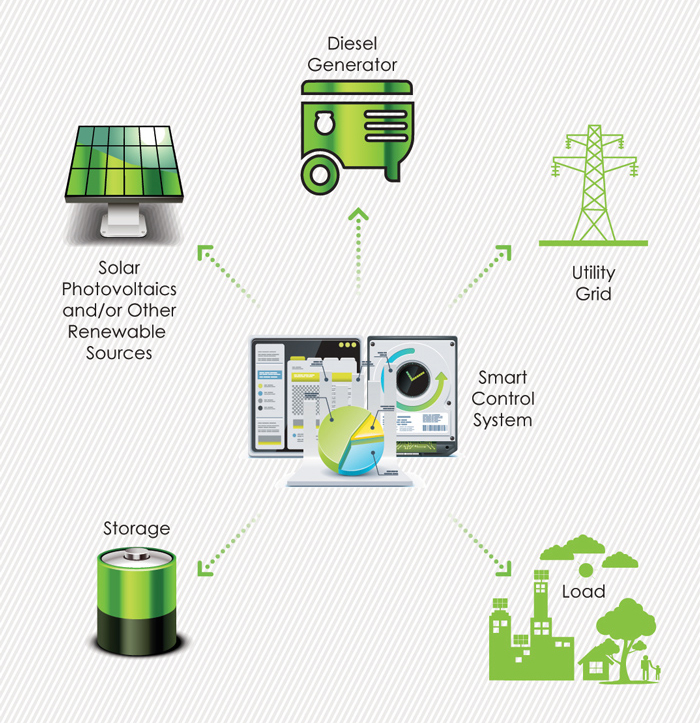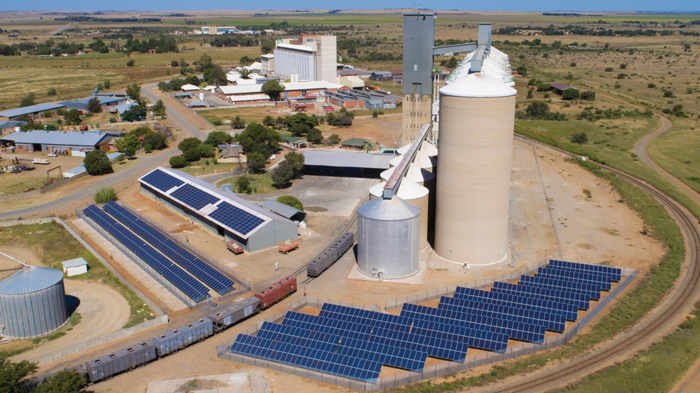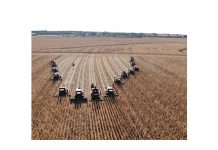In the last five years the responsibility to preserve the future of our planet has been driven home, as South Africa faces the consequences of climate change. From tornadoes in KwaZulu-Natal to a drought-stricken Northern Cape, the impacts of climate change are knocking at our door.
The way we approach energy usage and power production will need to change in the next 20 years. A greater focus must be placed on sustainability, cost efficiency and reliability. The solution comes in the form of solar photovoltaics (PV) and other renewable sources. In 2050, 40% of final energy will come from electricity – double today’s level. Over 60% of this electricity will have to come from solar PV and wind. These sustainable and renewable sources allow us to decarbonise our energy production, reducing the impact on our climate.
In order to achieve a reliable energy supply there is a worldwide migration to using micro-grids, also known as embedded generation. Micro-grids consist of three main components, namely generation by conventional and/or renewable sources, storage systems, and a smart control unit (Figure 1). This allows the decentralised production of energy by the end user and therefore reduces many losses in the distribution network. This solution is not only motivated by South Africa’s unreliable electrical network, but is an international trend. The United States of America (USA) is currently the largest micro-grid market in the world. Facilities in the USA have realised that interruptions caused by natural disasters, or other human errors, are too costly to their production output. They therefore opt for sustainable and reliable generation on their own premises, using micro-grid systems.

A great advantage of using renewable energy, is the reduction in input costs for any production process. This is one of the main motivations in implementing a solar PV system. However, when approaching the design of such a system, it is important to firstly evaluate the overall efficiency characteristics of the load. In many cases it is possible to reduce energy usage by 30% to 40% by replacing old equipment with new high efficiency equipment. Only after this assessment has been done, the optimal sizing of the solar PV system can be determined in order to guarantee performance efficiency as well as cost efficiency.
Using modern simulation tools, it is possible to optimise the design for each specific application. Meteorological statistics are used to precisely calculate the expected yield of the system, which can be used to evaluate the system’s performance after the installation. During the design phase the correctly-rated components are identified for a safe installation, including important electrical safety parameters such as fault level ratings. Considering these aspects, it is advisable to make use of professional specialists when deciding to install a solar PV system.
Choosing quality components for a solar PV system is of utmost importance. This will not only increase reliability and efficiency, but will be more cost-effective in the long run. Reputable inverter manufacturers provide 10-year warranties on their products. Accordingly, good quality PV modules (panels) will harness the solar irradiation more effectively. Tier 1 module manufacturers are considered bankable suppliers – in other words, they provide quality products supported by quality service.
A solar PV system’s success depends heavily on the quality of the installation and setup process. It is advised to make use of qualified installers who know the selected products. Using skilled and specialised experts will ensure high-quality work, but most importantly – a safe installation. The skills of a solar expert are key in the grid connection and setup of the control system.
The Internet of Things (IoT) is making waves in the modern age. This has allowed the connection of people and machines, as well as machines to machines, through the Internet. In the case of solar PV systems, this includes connecting inverters and smart controllers to a cloud database. Users can then access their solar installations and get live detailed information on the production, maintenance parameters and performance of their PV systems. The system performance can be verified by comparing the realised production data with the proposed yield from the design.
In total 87 international companies have undertaken a dedication to reduce climate change by reducing their emissions as part of the 1,5°C Coalition. Many South African companies have also started the transformation in adopting these new energy values. One of the forerunners in the agricultural sector is Senwes, who already in June 2017 was the first in South Africa to implement a solar PV system at a silo (Photo 1). The 358 kWp solar PV system was designed and implemented by Motla Consulting Engineers and consists of 1 120 solar panels, saving 62% of the annual electricity cost at the time. In conjunction with the cost-saving, the system also saves 472,5 tons of CO2 annually.

Solar PV and micro-grid solutions will ensure a reliable and cost-effective energy supply, in the client’s own control. Individuals should realise the climate emergency and undertake the commitment to live sustainably. With a combined effort in widely adopting solar PV and other renewable sources, our beautiful planet can be preserved for future generations.
For more information contact Stefan Lombard on 018 474 9000.

















